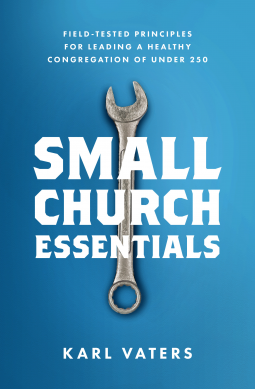
Small Church Essentials
Field-Tested Principles for Leading a Healthy Congregation of under 250
by Karl Vaters
This title was previously available on NetGalley and is now archived.
Send NetGalley books directly to your Kindle or Kindle app
1
To read on a Kindle or Kindle app, please add kindle@netgalley.com as an approved email address to receive files in your Amazon account. Click here for step-by-step instructions.
2
Also find your Kindle email address within your Amazon account, and enter it here.
Pub Date Mar 06 2018 | Archive Date Mar 29 2018
Talking about this book? Use #SmallChurchEssentials #NetGalley. More hashtag tips!
Description
Do you lead a small church?
Big churches get all the love. Articles, books, conferences—they mostly feature leaders of large congregations. Yet big churches are a small part of the ecclesial landscape. In fact, more than 90 percent of churches have fewer than 200 people. That means small churches play a big part in what God is doing.
Small Church Essentials is for leaders of these smaller congregations. It encourages them to steward their role well, debunking myths about small churches while offering principles for leading a dynamic, healthy small church.
Based on the popular six-hour lecture that Karl Vaters delivers to church leaders across the country, Small Church Essentials will affirm small church leaders and show them how to identify what they do well, and how to do it even better. Readers will:
- Be assured that leading a small congregation does not make them ministry failures
- Come away inspired to lead with passion, regardless the size of their church
- Have field-tested principles for leading a church in their context
- Possess new metrics for biblically measuring vitality in small churches
- Have a toolkit of resources to use in their everyday ministry
Karl Vaters has been a small church pastor for 30 years, is the author of The Grasshopper Myth: Big Churches, Small Churches, and the Small Thinking that Divides Us (2013), and travels extensively to churches and conferences to speak about leading a small church well.
If you are pastoring a small church, this book will be a breath of fresh air. It will affirm your calling while giving you fresh tools to help you lead. It will help you:
- Stop believing lies about small churches
- Lead your church to fulfill the role only small churches can
- Understand your congregation’s strengths and weaknesses
- Turn around a dying or unhealthy church
- Identify good trends and bad in church and culture
Available Editions
| EDITION | Other Format |
| ISBN | 9780802418067 |
| PRICE | $13.99 (USD) |
| PAGES | 192 |















